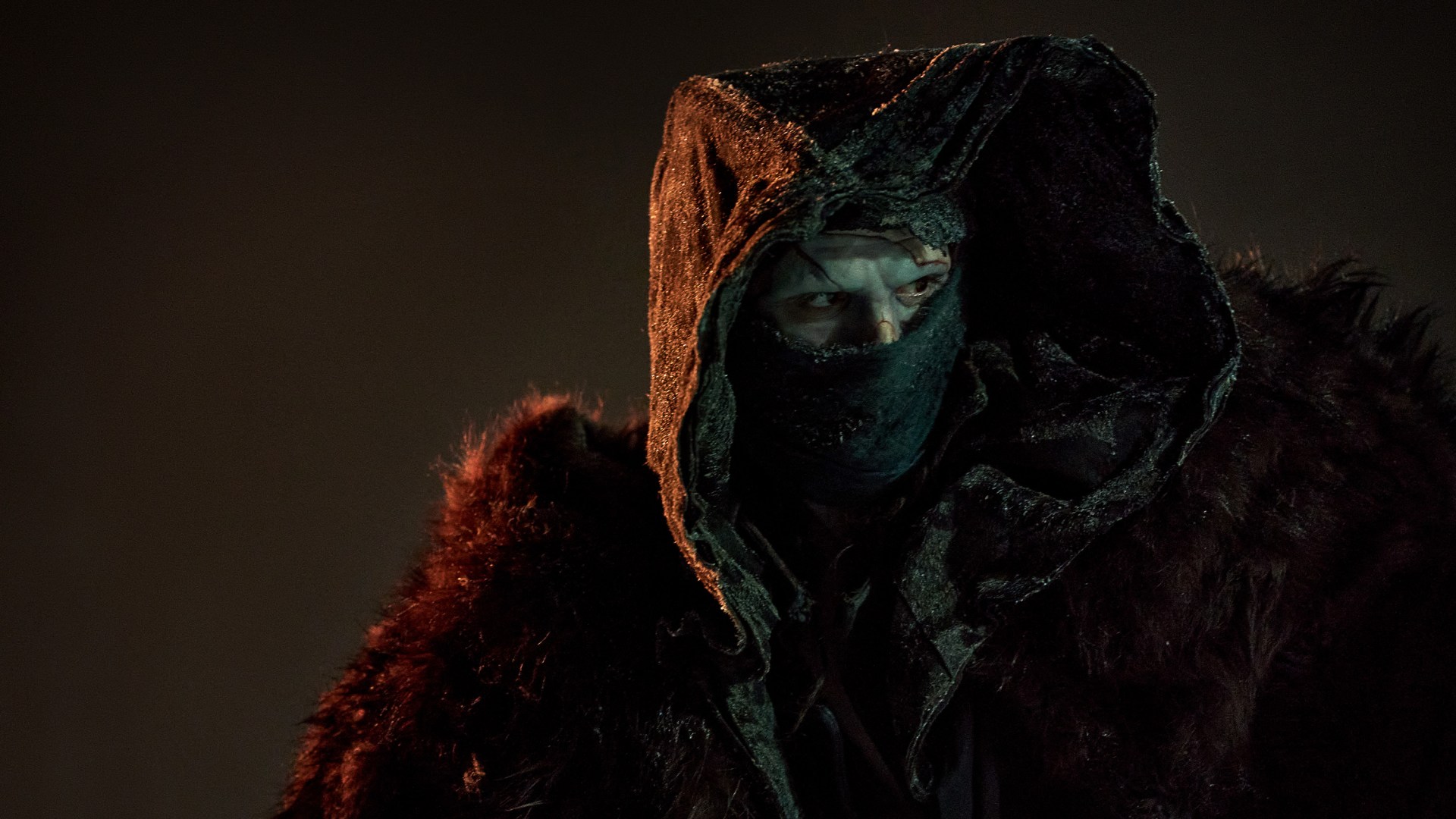When it was announced that Guillermo del Toro had struck a deal with Netflix to write and direct Frankenstein, an adaptation of Mary Shelley’s 1818 novel, longtime followers of the award-winning Mexican filmmaker couldn’t believe their luck. Del Toro has been making Gothic monster movies for three decades, and now he would finally get to try his hand at the original that started them all.
Sometimes, however, it’s best to leave passion projects to the imagination. Del Toro is an inspired director and Shelley’s novel is a classic, but this adaptation is a mess. It has its moments and its virtues. But in the end it fails to match either the depth of the source material or the richness of del Toro’s other films.
For readers and viewers unfamiliar with either, I’ll begin with del Toro before turning to the novel and where things go wrong (and, at times, right) in the transition to the big screen.
Born in Guadalajara, Mexico, in 1964, Guillermo del Toro Gómez directed his first film before he turned 30 years old. Frankenstein is his 13th, quite the pace given the scale of his larger productions. His work alternates between character-driven atmospheric horror—The Devil’s Backbone (2001) Crimson Peak (2015), and Nightmare Alley (2021)—and big-budget Hollywood blockbusters like Blade II (2002), Hellboy (2004), Hellboy II: The Golden Army (2008), and Pacific Rim (2013).
In 2017 del Toro made The Shape of Water, a love story between a mute janitor and an amphibious anthropoid. Although it is neither fans’ nor critics’ favorite—that title goes to Pan’s Labyrinth (2006), though my heart belongs to Cronos (1992)—it went on to win the Academy Award for Best Picture. Del Toro also won the Award for Best Director, a coronation of sorts.
Del Toro’s style and themes are consistent. When you’re in his cinematic world, you know it. Across every one of his films, he reveals himself as an obsessive, and what he’s obsessed with is creatures.
It’s a word with many meanings, and the director takes advantage of them all. Sometimes creatures refers to the fantastic, and indeed del Toro’s stories feature fairies and vampires and kaiju. Sometimes the word conjures spiritual beings, devils or gods or ghosts. Still other times it is simply monsters, real or imagined—the enormous tentacled behemoth out of the fiction of H. P. Lovecraft or else the fascist regime of Francoist Spain.
Three themes emerge. First, creatures have creators, and accordingly, del Toro is fascinated by the nature of invention, whether artistic, scientific, or technological. As a maker himself, he’s keen to explore the nature of making.
For human beings, the highest mystery of creation is birth and death. And so the second theme of del Toro’s stories is childhood and fatherhood—above all paternity’s perennial failures and their generational effects, usually terminating in tragic violence. Both Eden and the Fall loom large in his imagination.
Finally, creatures are marginal figures, and del Toro’s films are about what it’s like to live on the edge. It’s obvious enough how this applies to ghosts and fairies, vampires and devils. They’re always just out of sight, right around the corner, glimpsed and sought and lost from view.
Yet marginal figures are not only agents of myth or malice. They also include ordinary—or not so ordinary—men and women. Just as del Toro has a special interest in the fantastical, so too he has a special affection for the deplorable. Nightmare Alley, for example, tells the story of a traveling carnival of weirdos, oddballs, and outcasts. At the film’s heart is the “geek,” a down-and-out man reduced to the status of a slave, mocked and gawked at by paying customers and treated worse than a beast.
Nightmare Alley reflects del Toro’s heart for the dispossessed and dejected. His is a preferential option for losers. He puts them on display not to invite us to point and laugh but to show us their humanity, and with it our own.
At the same time, del Toro is himself a maker of monsters and thus a kind of cinematic carnival barker. This is the fundamental ambiguity of his art, an ambiguity he openly interrogates.
All this makes Mary Shelley’s Frankenstein an ideal vehicle for del Toro’s obsessions. For more than two centuries, the novel has permeated our culture to such a degree that it’s difficult to disentangle its legacy from the text. As most readers know, Frankenstein is the name not of the monster but of the monster’s maker. But then, as readers may also know, that phrasing has it the wrong way round. Shelley invites readers to wonder: Who in fact is the monster? Is it the creature or his creator?
Here is what readers may not recall. The subtitle of Frankenstein is “The Modern Prometheus”; Shelley is transposing the myth of the god who gave humans fire into the early 19th century in the wake of the Enlightenment and at the height of the Industrial Revolution. The novel’s subtext is both the transformative nature of technological invention and the unintended consequences that result. (Recall that Prometheus was punished for his gift.)
Furthermore, the novel’s monster is not a stumbling, mumbling oaf but a literate, eloquent, emotionally voluble seeker, a romantic soul in a reanimated corpse. A crucial piece of his journey of self-understanding comes when he reads John Milton’s epic poem Paradise Lost, and in this way Shelley mischievously brings into view the theological questions that lie beneath the surface of her story. After all, Milton’s poem is a retelling of the opening chapters of Genesis. Is the monster a second Adam or a fallen angel? Is Frankenstein godlike, or is he monstrous precisely because, like Adam, he sought to “be like God” (Gen. 3:5)?
Del Toro’s adaptation is admirable in its attempt to be faithful to Shelley. Rather than hide the layers of source material—del Toro retelling Shelley retelling Milton retelling Moses, all shot through with echoes of Greek mythology—the film wears them like a badge of honor. Every image and exchange of dialogue is saturated with religious allusions. Occasionally the result is quite beautiful, such as in the quiet painterly compositions that recur. More often, though, scenes are bent over with the sheer weight of their overt evocations. Del Toro’s overstuffed script leaves little to viewers’ interpretation; he is far too eager to tell you what he means.
Like the novel, the film unfolds in the form of a flashback. Unlike the novel, the story is split in two: first the protagonist’s tale, as told by Victor Frankenstein (Oscar Isaac), then the monster’s tale, as told by the monster himself (Jacob Elordi).
The latter section is far superior to the former. Where the first half is hurried, humorless, and overwrought, the second half is patient, subtle, and affecting. Both leads are accomplished actors, but while Isaac hams it up, Elordi’s performance of the monster as an awkward adolescent, filled equally with fear and awe of the world, is the highlight of the movie. Del Toro wants us to see that the monster’s fury could be cooled, had he a creator sufficiently caring to teach him.
Del Toro contracts and combines some of Shelley’s characters while introducing others. Elizabeth (Mia Goth), the fiancée of Frankenstein’s brother, has left the convent but retains her faith in God. This faith enables her to see Frankenstein for who he is (“Only monsters play God,” she says to him) and to see his creation for what he (not “it”) is: a living soul in need of love. Because love requires another—“It is not good for the man to be alone” (Gen. 2:18)—the monster pleads with Frankenstein to create for him a female companion, to no avail. This Adam is fated to lack both a mother and an Eve.
Frankenstein is a movie about what happens when fathers fail and mothers die—when, in a word, male is severed from female. It is a pointed reflection on the unfortunate grammatical fact that the verb to mother captures the work of a lifetime whereas to father names but a single moment at the very start.
The ending of Shelley’s novel—and here I will spoil a 200-year old book and a 1-month old movie—is pure tragedy. Frankenstein dies, having lost everyone he ever loved. The monster, overwhelmed by self-loathing, walks into the cold north in order to burn himself alive, thereby ridding the world of his presence. “Polluted by crimes, and torn by the bitterest remorse,” he asks, “where can I find rest but in death?”
Though del Toro left the church as an adult, he was raised Roman Catholic, and he is open about Catholicism’s influence on all his films. So too here. The creature tells his creator the story of his life from his own perspective, and to our surprise, this induces not fury but pity. Frankenstein asks for forgiveness, the only time he ever sincerely admits fault. The creature grants it, kissing his maker’s forehead as he dies. The creature then turns north—undying, unkillable, immortal—and walks into the sunrise, his eyes filled with hope for the first time.
There it is again: del Toro’s eye for the unloved, his affection for monsters. He can’t let this one escape our compassion either. I regret the shortcomings that hold back this particular adaptation—the contrived first half, the horrid and unnecessary CGI, the monster’s outlandish fights and brutal rampages that feel torn out of some other movie—but they are worth regretting, because del Toro has a unique perspective on this material. Shelley’s original was biblical in body but pagan in spirit. For del Toro it is just the reverse. His creature looks like a monster on the outside but has a Christian soul.
Brad East is an associate professor of theology at Abilene Christian University. He is the author of four books, including The Church: A Guide to the People of God and Letters to a Future Saint.




















